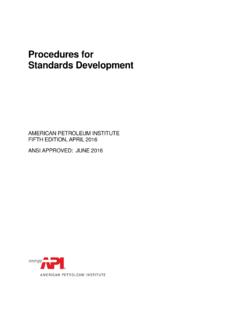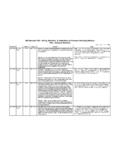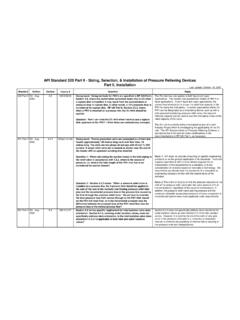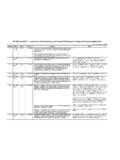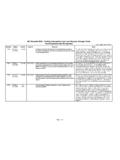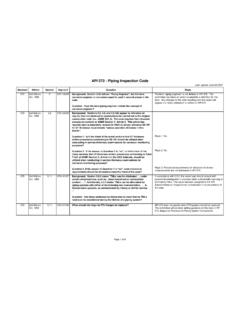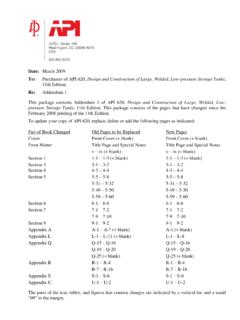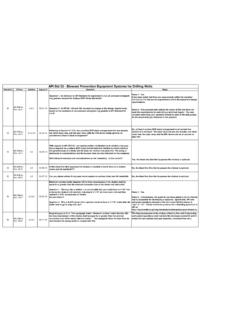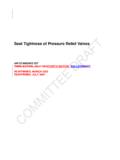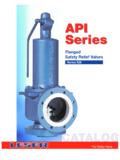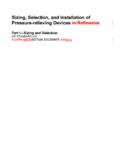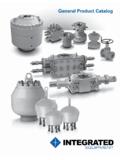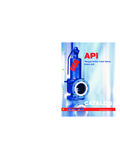Transcription of API Standard 527 - Seat Tightness or Pressure …
1 StandardEditionSectionInquiry #QuestionReply5273rd Edition - July 1527-I-02/04 Should the effective orifice sizes in Table 1 be shown as areas ( ) instead of linear dimensions (inch)? Yes. This is a typographical error that will be corrected in an errata to the Edition - July 1991 : The set Pressure of a PRV is determined by the system design requirements, the operating modes and various relevant pressures of a system. For example, during startup, the system Pressure can be higher than the normal operating Pressure , and higher than the test Pressure of seat Tightness of a 1: In Section , seat Tightness test Pressure for a PRV is defined to be 90% of the set Pressure . When the system Pressure is maintained at 93% of the PRV set Pressure during a short period of during the startup of a system, shall the test Pressure for seat Tightness of PRV be changed to the value above 93% of set Pressure ?
2 Question 2: If the answer to Question #1 is yes, why did API specify the test Pressure for seat Tightness of PRV as 90% of set Pressure ? Why did API not recommend the test Pressure be the higher Pressure enveloping the Pressure of any operating mode?Question 3: If the answer Question #1 is no, is the invisible leak-through seat at pressures above test Pressure allowed below the simmering stage?Reply 1: In Section , seat Tightness test Pressure for a PRV is defined to be 90% of the set Pressure . When the system Pressure is maintained at 93% of the PRV set Pressure during a short period of during the startup of a system, shall the test Pressure for seat Tightness of PRV be changed to the value above 93% of set Pressure ?Reply 2: Due to limited committee resources, API cannot respond to questions seeking the rationale for requirements in its standards .
3 These requirements are based on the consideration of technical data and the judgment and skill of experienced engineering and technical personnel representing both users and manufacturers who serve on API s standards -writing 3: API Std. 527 does not address leakage above the test Pressure . Please consult with the valve Standard 527 - Seat Tightness or Pressure Relief Valves
